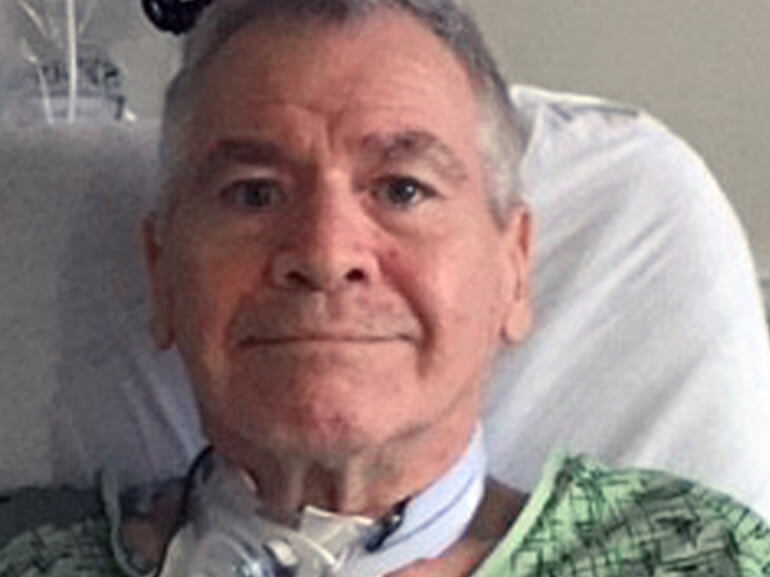Rafael's Story

Holding on to hope, and independence
When Rafael Cardenas Jr. began experiencing weakness in his hands and feet, he scheduled a routine check-up. Unfortunately, after extensive neurological testing, Rafael and his wife, Irene, learned that the 66-year-old was in the early stages of amyotrophic lateral sclerosis (ALS, or Lou Gehrig’s disease.)
On November 15, he went to bed with no signs of distress. Irene went to wake him the next morning and found Rafael unresponsive, frothing at the mouth and breathing poorly. She dialed 911 and ambulance crews rushed him to the hospital.
In the emergency room, Rafael’s heart stopped and doctors performed life-saving CPR. He was admitted to the intensive care unit, where he fought for his life for more than three weeks. He battled pneumonia, had a chest tube inserted and required several intravenous antibiotics.
By early December, Rafael stabilized enough for Irene to consider the next steps in care. His care team he referred him to Select Specialty Hospital-Longview.
Irene’s goals for her husband included helping him breathe independently and not lose ground in his fight against ALS. A physician-led team of nurses, therapists and pharmacists created a plan to help Rafael continue his fight.
Respiratory therapists began gradually reducing the work the ventilator did for Rafael, allowing his lungs to take over. They led him through breathing exercises that increased stamina and capacity. He was able to liberate from the ventilator after two weeks. His airway support remained, but, working with speech and respiratory therapists, he learned how to use a special valve that allowed him to speak.
Increased oxygen meant Rafael’s consciousness and ability to participate in therapy improved. Physical and occupational therapists led him through leg, arm and core exercises with light weights and resistance bands. They practiced sitting up, getting into a chair and standing.
During his illness, Rafael’s ability to swallow took a downturn – a side effect of ALS. The speech therapist led him through rounds of mouth, tongue and throat exercises. After assessing his ability to swallow safely, Rafael was allowed to begin eating by mouth again and his feeding tube was removed.
He also made larger strides in physical therapy, taking his first steps with a walker.
After a month, Rafael was ready to take the next step in his journey. He left for an inpatient rehabilitation hospital, where he will continue building strength and learn how to best take care of himself as he continues fighting against ALS.